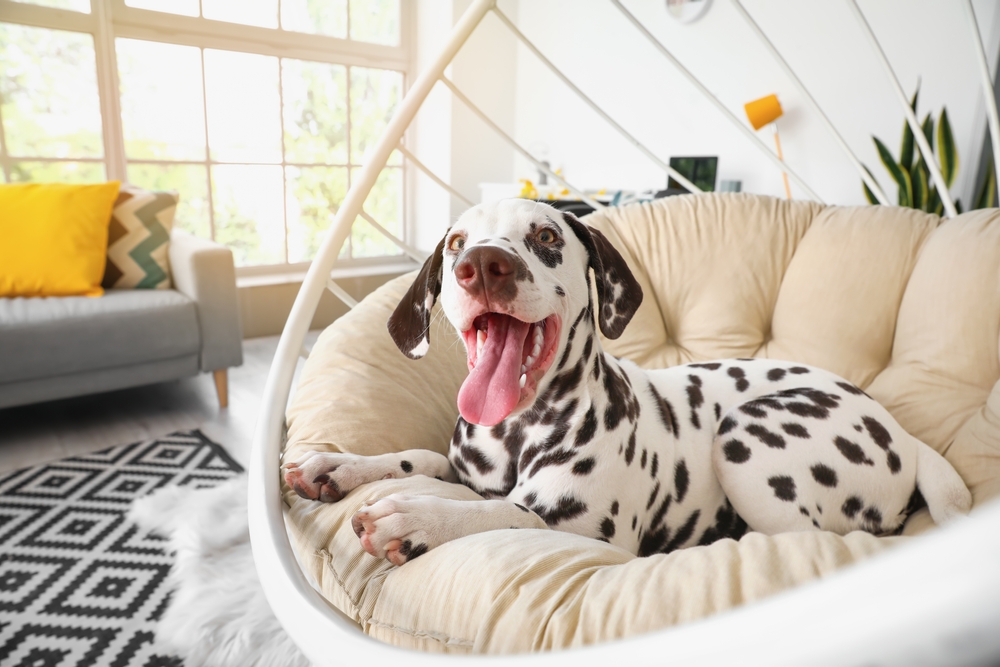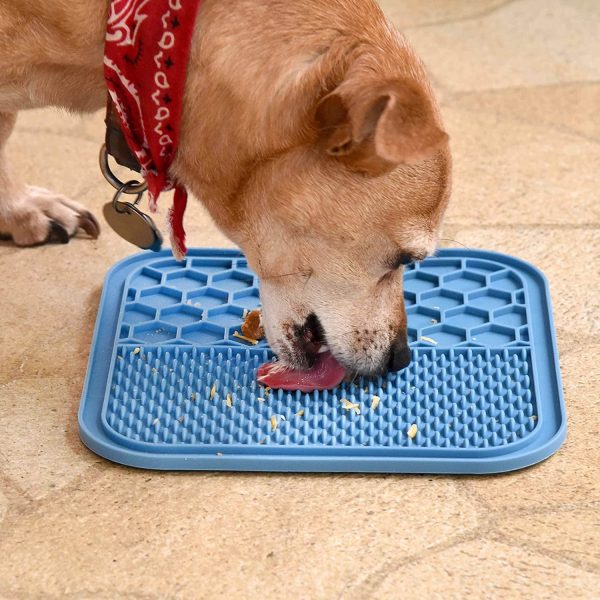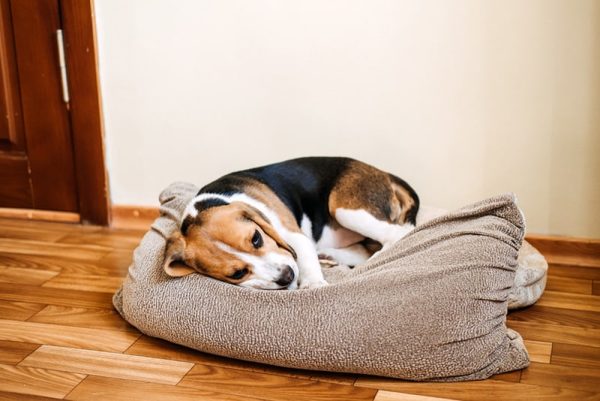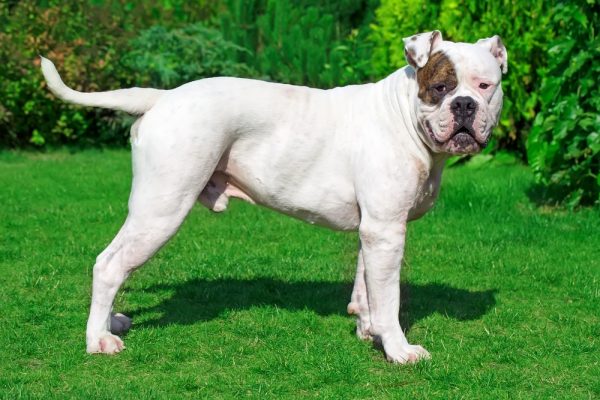In this article
Owning a Dalmatian can be a rewarding and fulfilling experience for dog lovers. They have high energy levels and love to run and play, so a spacious yard, weekly hikes, or regular trips to the dog park are essential. Dalmatians are social animals, thrive on human companionship, and they make really awesome family pets and get along well with children when properly socialized. But…are these lively dogs good for apartment renters? There are a couple of reasons why Dalmatians aren’t the best option for apartment living, Let’s discuss.

Can Dalmatians Live in Apartments?
Dalmatians are super friendly and make great and fun companions. However, when it comes to living in apartments, they may not be the best choice. These dogs have a super-high energy level and require a lot of exercise to stay happy and healthy. Apartments typically don’t provide enough space for them to run and play (and when they do it can be noisy for surrounding neighbors), which can lead to behavioral problems and frustration for the dog.
Additionally, being confined to a small apartment for long periods of time can exacerbate boredom, destructive behaviors, and frustration. Also, it’s generally recommended that Dalmatians have access to a large, securely fenced yard where they can burn off their energy and enjoy their natural instincts, alongside regular walks.
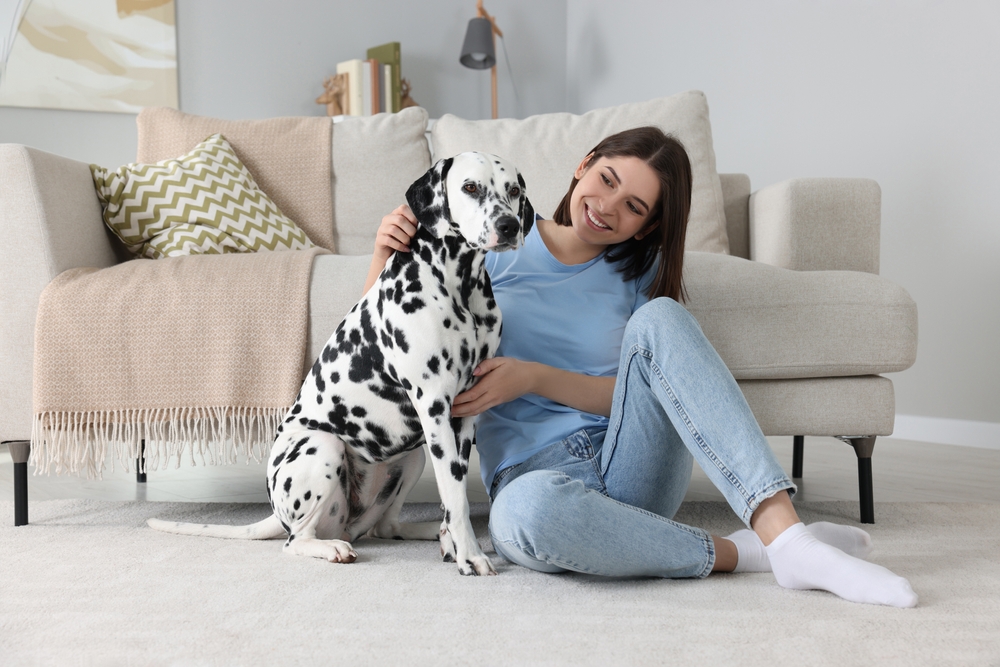
The Importance of Exercise for Dalmatians
Exercise is crucial for the physical and mental well-being of Dalmatians, like any other dogs, regardless of whether they live in a house or an apartment. Regular exercise helps prevent boredom, obesity, promotes overall health, and provides an outlet for their energy.
For Dalmatians living in apartments, exercise becomes even more important to ensure they remain happy and content. Try to provide your pup with at least 2 hours of exercise each day, split into multiple sessions. This can include brisk walks, jogging, or interactive play sessions. Engaging your Dalmatian in mentally stimulating activities during exercise, like teaching them new tricks or playing puzzle games, can help tire them out both physically and mentally.
Dalmatians aren’t the best apartment dogs due to their exercise needs and energy levels. But if you live in an apartment and are set on having a Dalmatian, the rest of this article will provide some tips to make living in an apartment with a Dalmatian easier.
Indoor Exercise Ideas for Dalmatians
Living in an apartment doesn’t mean your Dalmatian can’t get some of their exercise indoors. There are plenty of activities you can engage in to keep them active and entertained. One option is to set up an indoor agility course using furniture, tunnels, and low jumps. This not only provides physical exercise but also stimulates their problem-solving skills. Another indoor exercise idea is to play interactive games like hide-and-seek or fetch with soft toys.
These games engage your Dalmatian’s mind and keep them physically active. You can also consider using mazes made of cardboard boxes, puzzle toys or treat-dispensing toys to mentally stimulate your dog while providing a reward for their efforts. Additionally, teaching your dog new tricks or obedience commands indoors can provide mental stimulation and exercise at the same time. Remember to be patient and reward their efforts with praise and some tasty dog treats.
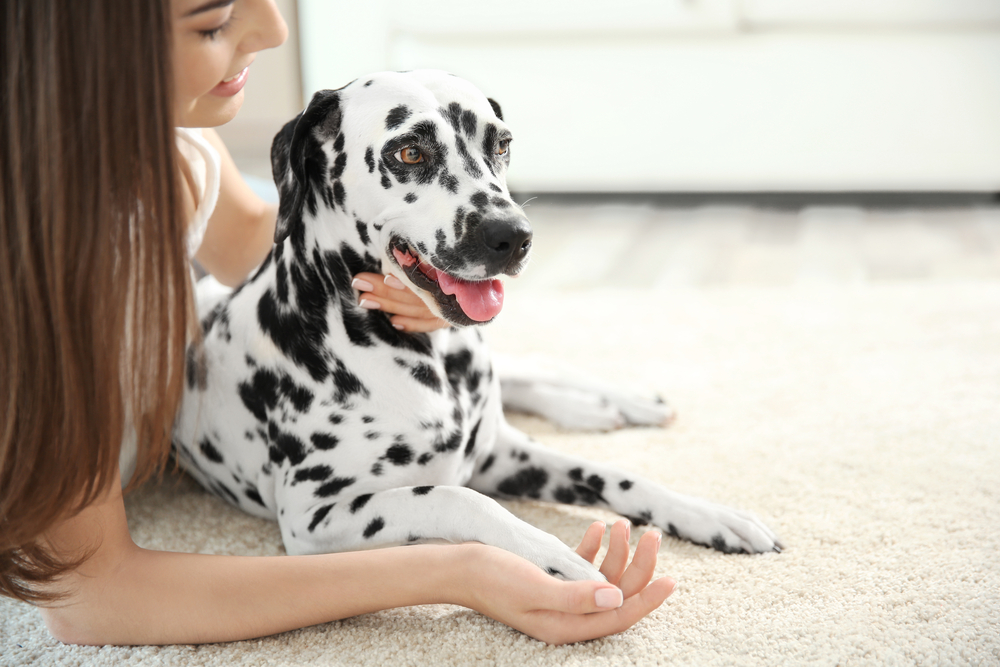
Mental Stimulation Activities for Apartment-Living Dalmatians
In addition to physical exercise, Dalmatians require mental stimulation to prevent boredom and destructive behavior. Living in an apartment can sometimes limit their exposure to the outside world, so it’s so super crucial to provide them with mental enrichment activities. One effective way to mentally stimulate your Dalmatian is through interactive toys and different types of games. These toys challenge their problem-solving skills and keep their minds engaged.
You can also introduce scent work activities, where you hide treats or toys around the apartment for your Dalmatian to find. This taps into their natural instincts and provides mental stimulation. Another option is to enroll your Dalmatian in obedience classes or agility training, which not only provides mental stimulation but also strengthens the bond and gets your pup some exercise – both mental and physical. With a variety of mental stimulation activities to choose from, you can keep your Dalmatian’s mind sharp and engaged even in an apartment setting.
Housetraining and Potty-Training Tips
Housetraining is an essential aspect of ensuring your Dalmatian thrives in an apartment setting. Consistency and patience are a must-have when it comes to housetraining your Dalmatian. Start by establishing a routine for bathroom breaks, taking your Dalmatian outside at regular intervals throughout the day. Praise and reward them when they eliminate in the appropriate spot, reinforcing the desired behavior.
Create a designated potty area outside your apartment and ensure that it’s easily accessible. If accidents happen inside, never scold or punish your Dalmatian, as this can create anxiety and hinder the housetraining process. Instead, clean up accidents with an enzymatic cleaner to remove any lingering scent, which can attract your Dalmatian back to the same spot. Positive redirection and regular training sessions will help your Dalmatian understand where and when to eliminate, leading to a successful housetraining experience.
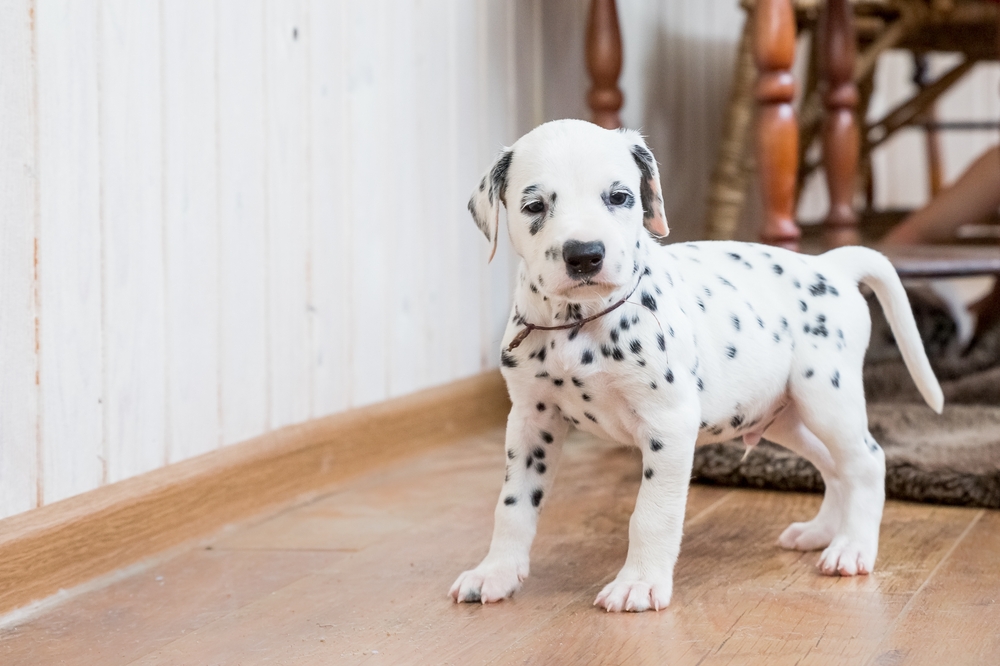
Create a Comfortable Living Space for Your Dalmatian in an Apartment
To ensure your Dalmatian thrives in an apartment, it’s important to create a comfortable living space that meets their needs. So, provide a cozy and designated area for your Dalmatian to rest, such as a comfortable dog bed or a crate. Make sure the area is away from drafts and noise to promote relaxation.
Dalmatians also appreciate having their own toys and safe chew treats to keep them occupied. Consider investing in rope toys or other durable chew toys to keep them mentally stimulated and prevent destructive chewing. It’s also important to provide access to fresh water and ensure they have balanced meals that meet their nutritional needs–if they’re hungry, they can get destructive. By creating a comfortable living space, you are setting the foundation for your pup to thrive in an apartment environment.
Socialize Your Dalmatian in an Apartment Complex
Living in an apartment complex provides ample opportunities for socialization, which is crucial for Dalmatians to develop good manners and positive behavior. Start socializing your dog from a young age by exposing them to different people, animals, and environments. Take them on walks around the apartment complex, introducing them to neighbors and other pets. Encourage positive interactions and reward your dog for calm and friendly behavior.
Also, consider enrolling your Dalmatian in obedience classes or organizing playdates with other well-behaved dogs in the complex. Regular and consistent socialization will help your Dalmatian become comfortable in various situations and reduce the likelihood of developing fear or aggression towards other dogs, animals or people.
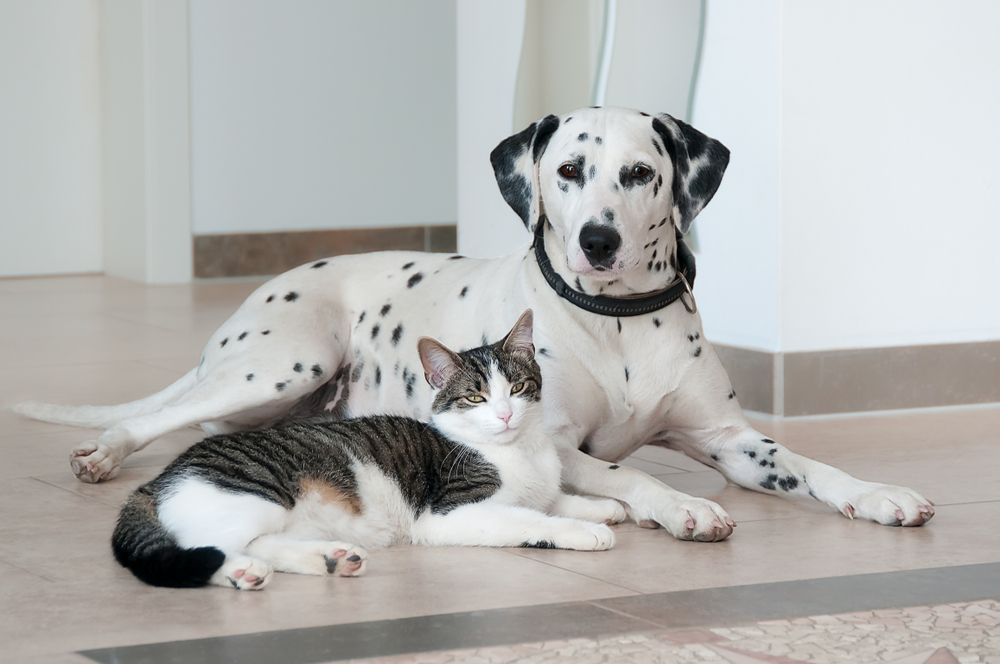
Dealing with Noise and Separation Anxiety in Apartments
Living in an apartment complex can expose your Dalmatian to various noises (like doorbells and random people in the hallway), which may trigger anxiety, fear or stress. So, it’s important to gradually desensitize your Dalmatian to these sounds from an early age and provide a safe space for them to retreat when they feel overwhelmed. Create a calm and cozy area in your apartment where your dog can relax (preferably away from your front door), away from any noise or commotion.
You can also introduce white noise or calming music to help drown out external sounds. Additionally, separation anxiety can be a common issue for dogs living in apartments due to the limited space and increased time alone.
To alleviate and prevent separation anxiety, gradually increase the time your dog spends alone, starting with short periods and gradually building up. Use positive reinforcement and provide engaging toys or treats to keep them occupied while you are away. Implementing a consistent routine and ensuring your Dalmatian receives plenty of exercise and mental stimulation can also help reduce separation anxiety. Talk to a vet if you would ever need advice on the best routine and activities for your dog or ways to deal with separation anxiety.
If you need to speak with a vet but can't get to one, head over to PangoVet. It's an online service where you can talk to a vet online and get the personalized advice you need for your pet — all at an affordable price!


Frequently Asked Questions About Dalmatians
Do Dalmatians get along with other pets?
While individual temperament can vary, Dalmatians generally have a friendly and sociable nature, making them more likely to get along with other animals. But note that early socialization and proper training play a crucial role in ensuring positive interactions between Dalmatians and other pets. Introducing them to other animals from a young age and providing consistent training can help foster a harmonious relationship. Also, supervision and gradual introductions are necessary when bringing a Dalmatian into a household with existing pets. With proper care and attention, Dalmatians can indeed get along well with other pets.
Are Dalmatians easy to train?
When it comes to training, some Dalmatians can be a bit challenging. While they are intelligent and eager to please their owners, some dogs can also be stubborn and independent. This will greatly depend on their individual character, previous experiences and early socialization and training. The earlier the training starts, the more successful it tends to be. This breed requires consistent and patient training methods to ensure success. It’s important to establish clear boundaries and consistent routines from an early age, especially when it comes to things like potty training, jumping on strangers, and basic obedience commands, always using positive reinforcement.


Wrapping Things Up
So no, Dalmatians aren’t the ideal “apartment dog”, but it doesn’t mean they can’t be trained to live in apartments. It’s best to ensure they have ample time outdoors with plenty of exercise and mental stimulation. You may also want to implement training techniques to help keep your dog’s vocalizations down, in an effort to prevent complaints from your neighbors. By providing them with regular exercise, mental stimulation, and a comfortable living space, you can help your Dalmatian adapt and flourish in an apartment setting.
See also:
- White Pug: Facts, Origin & History (with Pictures)
- Are Dalmatians Good With Kids? Breed Temperament Facts & FAQ
Featured Image Credit: Pixel-Shot, Shutterstock
